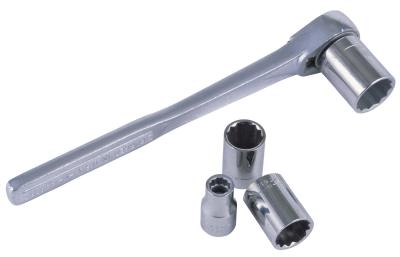
Tuning a Holley 4160 is a simple process thanks to Holley's modular carburetor design. Each model of the Holley carburetor family, regardless of its size, is tuned the same way, by adjusting the float valve to control the fuel level in the bowl(s), adjusting the idle mix valve to ensure the maximum vacuum during idle conditions and ensuring the jets are properly sized for the requirements of your engine. The 4160 is a 4-barrel, double-bowl design, which will require the tuning steps to be followed twice, once for the primaries and once for the secondaries.
Start the engine and remove the bowl sight screw to verify the fuel level within the bowl. If the fuel comes out of the hole with more than a trickle, or not at all, the float valve needs adjustment.
Turn the float valve adjustment screw on the top of the fuel bowl out two turns while prying up slightly on the adjustment nut. With the engine running, adjust the nut clockwise to lower the fuel level or counterclockwise to raise the fuel level until a slight trickle is achieved from the sight hole.
Reinstall the sight plug screw.
Tighten the idle screws (one on each side of the primary and secondary metering blocks). Once tightened, back them out exactly 1.5 turns.
Start the engine and connect a vacuum gauge to the intake manifold service port.
Monitor the gauge while making identical 1/2-turns to each screw on the primary metering block, moving then to the secondary metering block screws. Continue making adjustments until the vacuum gauge no longer reacts to the screw turns, indicating a maximum vacuum has been achieved.
Remove the vacuum gauge.
Unbolt the fuel bowls from their respective metering blocks with a 5/16-inch socket wrench and preserve the gaskets between both components.
Remove each brass jet from the primary and secondary metering block with a pair of pliers. Note the size of each jet (stamped on its head) and its specific location.
Replace the original jets with a larger or smaller set based on your engine's characteristics. Sluggish acceleration may indicate the need for a smaller jet set, along with fouled spark plugs. Backfiring may indicate that the engine is starved for fuel and needs larger jets.
Reinstall the fuel bowl and tighten the bolts to 8 foot-pounds of torque using a torque wrench.